Dear Zazie, Here is today’s Lovers’ Almanac from Mac Tag. Remember y’all, at TLA we celebrate all forms of love; true love, lost love, unrequited love, mad love, shadow love, random love, and abandoned love. Rhett
The Lovers’ Almanac
Dear Muse,
© copyright 2021 mac tag/cowboy coleridge all rights reserved
Pale Love, Pale Rider
© copyright 2020 mac tag/cowboy coleridge all rights reserved
a name
in an endless night
a call
a pleadin’,
in the sleepless mind,
to give
that which is needed
always there
in the shadows
in the recesses
of the restless mind
since first appearance
come unannounced
stay till want filled
and leave taken
when pleased
the point
where this is all
that is left
the only comfort
have to have
the verse
into the silence,
in this unforgivin’ night
in the vesture of sorrow
© copyright 2018 mac tag/cowboy coleridge all rights reserved
Callin’ out her name
In the darkness
of an endless night
Callin’ for her to come
To lay beside him
But she would not come
Pleadin’ with her
In the black
of his sleepless mind
Pleadin’ with her to give him
that which he needed
But she took no heed
He knew she was there
She was always there
In the shadows
In the recesses
of his restless mind
Since she had first appeared
she came unannounced
stayed as long as she wanted
and took her leave when she pleased
Now, he needed her
He had reached the point
where she was all he had left
Where she provided
the only comfort
in the pool of his despair
He had to have the words
Then, of a sudden,
into the silence,
in this unforgivin’ night,
she came, and whispered
Vengeance earned is vengeance due
Walk in the vesture of sorrow
© copyright 2016 mac tag all rights reserved
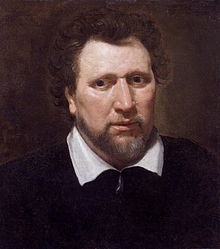
Jonson (c. 1617), by Abraham Blyenberch; oil on canvas painting at the National Portrait Gallery, London
Today is the birthday of Benjamin “Ben” Jonson (Westminster, London; c. 11 June 1572 – 6 August 1637 London); playwright, poet, actor and literary critic, whose artistry exerted a lasting impact upon English poetry and stage comedy. He popularised the comedy of humours. Perhaps best known for the satirical plays Every Man in His Humour (1598), Volpone, or The Foxe (1605), The Alchemist (1610) and Bartholomew Fayre: A Comedy (1614) and for his lyric poetry. Jonson is generally regarded as the second most important English dramatist, after William Shakespeare, during the reign of James I. Jonson was a classically educated, well-read and cultured man of the English Renaissance with an appetite for controversy (personal, political, artistic, and intellectual) whose cultural influence was felt upon the playwrights and the poets of the Jacobean era (1603–1625) and of the Caroline era (1625–1642).
Still to be powder’d, still perfum’d,
Lady, it is to be presum’d,
Though art’s hid causes are not found,
All is not sweet, all is not sound.
Give me a look, give me a face,
That makes simplicity a grace;
Robes loosely flowing, hair as free,
Such sweet neglect more taketh me
Than all the adulteries of art:
They strike mine eyes, but not my heart.
- Epicene, or The Silent Woman (1609), Act I, scene I
The Works of Ben Jonson, First Folio (1616)
The Forest
- Come my Celia, let us prove,
While we can, the sports of love;
Time will not be ours forever,
He at length our good will sever.
Spend not then his gifts in vain;
Suns that set may rise again,
But if once we lose this light,
‘Tis with us perpetual night.
Why should we defer our joys?
Fame and rumour are but toys.- Song, To Celia, lines 1-10.
- Compare Catullus, Carmina V
- Song, To Celia, lines 1-10.
- Follow a shadow, it still flies you;
Seem to fly it, it will pursue:
So court a mistress, she denies you;
Let her alone, she will court you.- That Women Are But Men’s Shadows, lines 1-4.
- Drink to me only with thine eyes,
And I will pledge with mine;
Or leave a kiss but in the cup
And I’ll not look for wine.
The thirst that from the soul doth rise
Doth ask a drink divine;
But might I of Jove’s nectar sup,
I would not change for thine.
I sent thee late a rosy wreath,
Not so much honoring thee
As giving it a hope that there
It could not withered be.
But thou thereon didst only breathe,
And sent’st it back to me;
Since when it grows and smells, I swear,
Not of itself, but thee.- Song, To Celia, lines 1-16; this poem was inspired by “Letter XXIV” of Philostratus, which in translation reads: “Drink to me with your eyes alone… And if you will, take the cup to your lips and fill it with kisses, and give it so to me”.
The Works of Ben Jonson, Second Folio (1640)
Underwoods
- I now think, Love is rather deaf, than blind,
For else it could not be,
That she,
Whom I adore so much, should so slight me,
And cast my love behind.- IX, My Picture Left in Scotland, lines 1-5.
The voice so sweet, the words so fair,
As some soft chime had stroked the air;
And, though the sound were parted thence,
Still left an echo in the sense.
- LXXXIV, Eupheme, part 4, lines 37-40
His childhood friendship with Maria Elizabeth Bicknell developed into a deep, mutual love. Their marriage in October 1816 at St Martin-in-the-Fields was followed by a honeymoon tour of the south coast. The sea at Weymouth and Brighton stimulated Constable to develop new techniques of colour and brushwork. After the birth of their seventh child in January 1828, Maria fell ill and died of tuberculosis on 23 November, at the age of 41. Intensely saddened, Constable wrote to his brother Golding, “hourly do I feel the loss of my departed Angel—God only knows how my children will be brought up…the face of the World is totally changed to me”. Thereafter, he dressed in black and was, “a prey to melancholy and anxious thoughts”. He cared for his seven children alone for the rest of his life.


| “ | For the last two years I have been running after pictures, and seeking the truth at second hand… I have not endeavoured to represent nature with the same elevation of mind with which I set out, but have rather tried to make my performances look like the work of other men…There is room enough for a natural painter. The great vice of the present day is bravura, an attempt to do something beyond the truth. | ” |


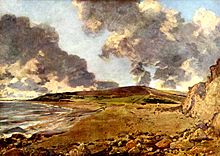




-

Salisbury Cathedral from the Bishop’s Grounds c. 1825. As a gesture of appreciation for John Fisher, the Bishop of Salisbury, who commissioned this painting, Constable included the Bishop and his wife in the canvas. Their figures can be seen at the bottom left of the painting, behind the fence and under the shade of the trees.
-
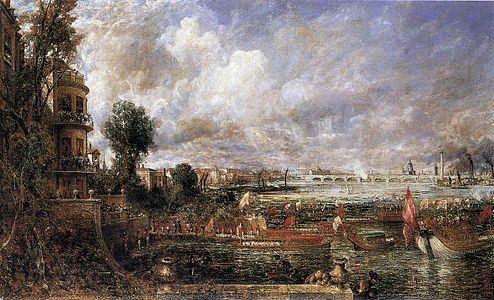
The Opening of Waterloo Bridge seen from Whitehall Stairs, 18 June 1817, oil on canvas, c. 1832. Tate Britain
In her photography, Cameron strove to capture beauty. She wrote, “I longed to arrest all the beauty that came before me and at length the longing has been satisfied.”
Gallery





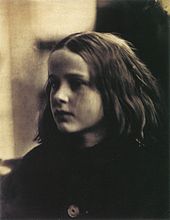




-

Painting by George Frederic Watts – 1850-1852
-
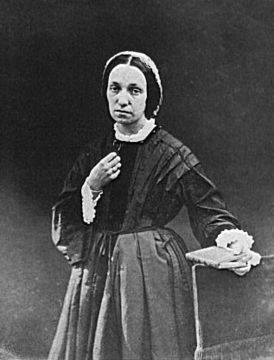
Photograph by her brother-in-law Charles Somers Somers-Cocks, 3rd Earl Somers, c. 1860
-

Portrait by Henry Herschel Hay Cameron – 1870
-

Portrait by Henry Herschel Hay Cameron – 1870
-

Drawing of Julia Margaret Cameron by James Prinsep (Date Unknown)
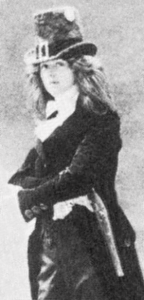 Today is the birthday of Renée Vivien, born Pauline Mary Tarn (London 11 June 1877 – 18 November 1909); poet who wrote in French, in the style of the Symbolistes and the Parnassiens. A high-profile lesbian in the Paris of the Belle Époque, she was as notable for her lifestyle as for her work. Many of her poems are autobiographical, reflecting a life of extreme hedonism, leading to early death. She was the subject of a pen-portrait by her friend Colette. During her brief life, Vivien was an extremely prolific poet who came to be known as the “Muse of the Violets”, derived from her love of the flower.
Today is the birthday of Renée Vivien, born Pauline Mary Tarn (London 11 June 1877 – 18 November 1909); poet who wrote in French, in the style of the Symbolistes and the Parnassiens. A high-profile lesbian in the Paris of the Belle Époque, she was as notable for her lifestyle as for her work. Many of her poems are autobiographical, reflecting a life of extreme hedonism, leading to early death. She was the subject of a pen-portrait by her friend Colette. During her brief life, Vivien was an extremely prolific poet who came to be known as the “Muse of the Violets”, derived from her love of the flower.
Brumes de fjords, 1902
Les fleurs sans parfum
Ses compagnes l’appelèrent du haut des rochers.
Ses compagnes l’appelèrent en pleurant.
Elle leur tendit les bras des profondeurs de la montagne.
Ses larmes coulèrent sur les fleurs sans parfum,
Mais elle ne put répondre à ses compagnes,
Car, déjà, elle avait oublié leur langage.
-
Brumes de fjords, Renée Vivien, éd. Alphonse Lemerre, 1902, Les fleurs sans parfum, p. 77
Légende du saule
Les premiers souffles du printemps s’attiédissaient.
Les forêts étaient lourdes de la vie intarissable des plantes et du rut des animaux.
Les Nymphes violées s’évanouissaient de leurs amoureuses blessures et les Hamadryades elles-mêmes, dans leurs temples d’écorce et de feuillages, n’étaient plus à l’abri de l’attaque des Faunes.
-
Brumes de fjords, Renée Vivien, éd. Alphonse Lemerre, 1902, Légende du saule, p. 103
Divinement et terriblement éblouie, elle vit la Naïade lui sourire d’un sourire qui semblait attirer et promettre, et elle eut le pressentiment des mortelles amours…
Revenue à la conscience d’elle-même, elle chercha de nouveau, mais en vain, l’illusion mystérieuse de ce visage.
Le songe avait disparu.
-
Brumes de fjords, Renée Vivien, éd. Alphonse Lemerre, 1902, Légende du saule, p. 103
Sapho
Vois se rapprocher l’Aurore Vénérable,
Apportant l’effroi, la souffrance et l’effort,
Et le souvenir dont la langueur accable,
La vie et la mort.
-
Sapho; traduction nouvelle avec le texte grec, Renée Vivien, éd. Alphonse Lemerre, 1903, p. lire en ligne
L’herbe de l’été pâlit sous le soleil.
La rose, expirant sous les âpres ravages
Des chaleurs, languit vers Pombre, et le sommeil
Coule des feuillages.
-
Sapho; traduction nouvelle avec le texte grec, Renée Vivien, éd. Alphonse Lemerre, 1903, p. lire en ligne
Poèmes en vers
On m’a montrée du doigt en un geste irrité
Parce que mon regard cherchait ton regard tendre…
En nous voyant passer, nul n’a voulu comprendre
Que je t’avais choisie avec simplicité.
- Huitième strophe de « Paroles à l’amie » (publié dans le recueil A l’heure des mains jointes en 1906).
-
Choix de poèmes, Renée Vivien, éd. Thi-Van Phuong Nguyen, 2010 (1e éd. 2001), p. 23
Laissons-les au souci de leur morale impure,
Et songeons que l’aurore a des blondeurs de miel,
Que le jour sans aigreur et que la nuit sans fiel
Viennent, tels des amis dont la bonté rassure…
Nous irons voir le clair d’étoiles sur les monts…
Que nous importe, à nous, le jugement des hommes ?
Et qu’avons-nous à redouter, puisque nous sommes
Pures devant la vie et que nous nous aimons ?
- Les deux dernières strophes du poème « Paroles à l’amie » (publié dans le recueil A l’heure des mains jointes en 1906).
-
Choix de poèmes, Renée Vivien, éd. Thi-Van Phuong Nguyen, 2010 (1e éd. 2001), p. 23
Today is the birthday of William Clark Styron, Jr. (Newport News, Virginia; June 11, 1925 – November 1, 2006 Martha’s Vineyard, Massachusetts); novelist and essayist who won major literary awards for his work.
Styron was best known for his novels, including:
- Lie Down in Darkness (1951), his acclaimed first work, published at age 26;
- The Confessions of Nat Turner (1967), narrated by Nat Turner, the leader of an 1831 Virginian slave revolt;
- Sophie’s Choice (1979), a story “told through the eyes of a young aspiring writer from the South, about a Polish Catholic survivor of Auschwitz and her brilliant but psychotic Jewish lover in postwar Brooklyn”.
In 1985, he suffered from his first serious bout with depression. When he emerged out from under this initial experience, Styron was able to write the memoir Darkness Visible (1990), the work he became best known for during the last two decades of his life. Sophie’s Choice is one of the books that has stayed with me since I read it. A formative book. If you have not read it, you should drop what you are doin’ and read it. Now.
Sophie’s Choice (1979)
- Her thought process dwindled, ceased. Then she felt her legs crumple. “I can’t choose! I can’t choose!”
- Ch. 15.
- Someday I will understand Auschwitz. This was a brave statement but innocently absurd. No one will ever understand Auschwitz.
- Ch. 16.
- Let your love flow out on all living things. These words at some level have the quality of a strapping homily. Nonetheless, they are remarkably beautiful, strung together in their honest lump-like English syllables… Let your love flow out on all living things.
But there are a couple of problems with this precept of mine. The first is, of course, that it is not mine. It springs from the universe and is the property of God, and the words have been intercepted — on the wing, so to speak — by such mediators as Lao-tzu, Jesus, Gautama Buddha and thousands upon thousands of lesser prophets, including your narrator, who heard the terrible truth of their drumming somewhere between Baltimore and Wilmington and set them down with the fury of a madman sculpting in stone.- Ch. 16; the italicized words being quotes of the song “Let Your Love Flow” by Larry E. Williams, as sung by The Bellamy Brothers
- This was not judgement day — only morning. Morning: excellent and fair.
- Last lines.
Mac Tag

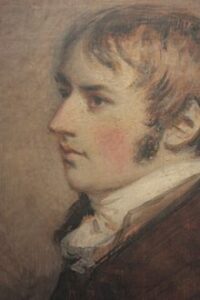
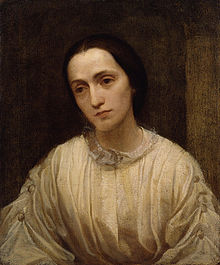
No Comments on "The Lovers’ Chronicle 11 June – Vesture – verse by Ben Jonson – art by John Constable – photography by Julia Margaret Cameron – birth of William Styron"